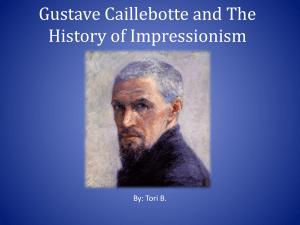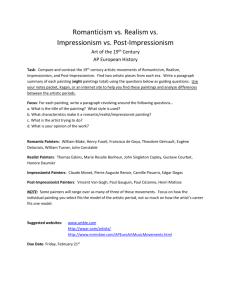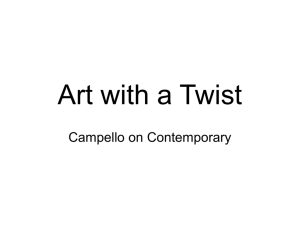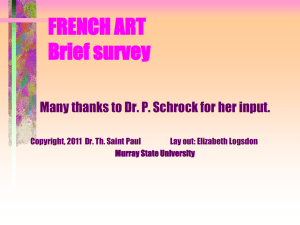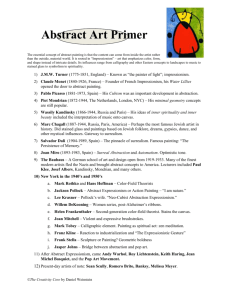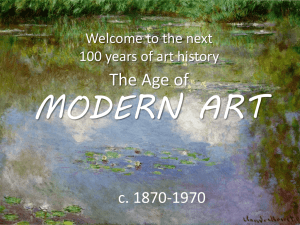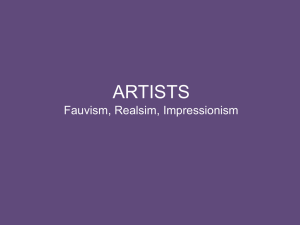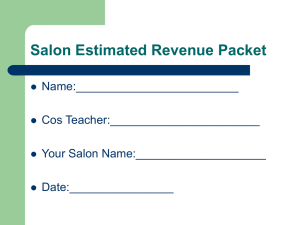Impressionism Powerpoint Notes
advertisement
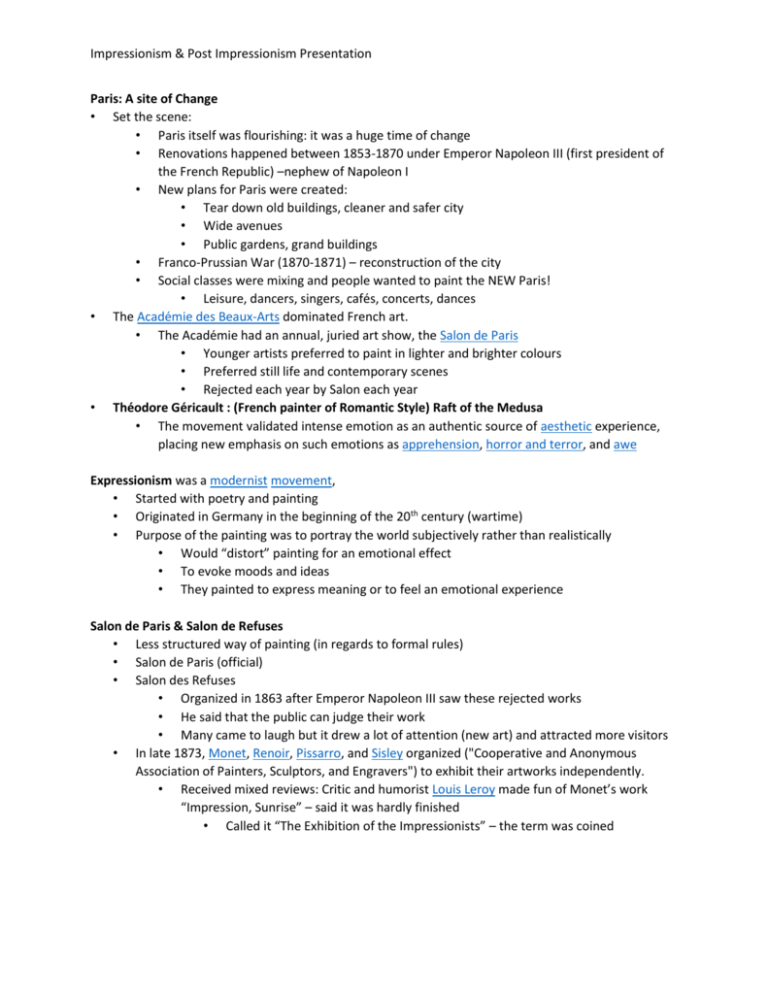
Impressionism & Post Impressionism Presentation Paris: A site of Change • Set the scene: • Paris itself was flourishing: it was a huge time of change • Renovations happened between 1853-1870 under Emperor Napoleon III (first president of the French Republic) –nephew of Napoleon I • New plans for Paris were created: • Tear down old buildings, cleaner and safer city • Wide avenues • Public gardens, grand buildings • Franco-Prussian War (1870-1871) – reconstruction of the city • Social classes were mixing and people wanted to paint the NEW Paris! • Leisure, dancers, singers, cafés, concerts, dances • The Académie des Beaux-Arts dominated French art. • The Académie had an annual, juried art show, the Salon de Paris • Younger artists preferred to paint in lighter and brighter colours • Preferred still life and contemporary scenes • Rejected each year by Salon each year • Théodore Géricault : (French painter of Romantic Style) Raft of the Medusa • The movement validated intense emotion as an authentic source of aesthetic experience, placing new emphasis on such emotions as apprehension, horror and terror, and awe Expressionism was a modernist movement, • Started with poetry and painting • Originated in Germany in the beginning of the 20th century (wartime) • Purpose of the painting was to portray the world subjectively rather than realistically • Would “distort” painting for an emotional effect • To evoke moods and ideas • They painted to express meaning or to feel an emotional experience Salon de Paris & Salon de Refuses • Less structured way of painting (in regards to formal rules) • Salon de Paris (official) • Salon des Refuses • Organized in 1863 after Emperor Napoleon III saw these rejected works • He said that the public can judge their work • Many came to laugh but it drew a lot of attention (new art) and attracted more visitors • In late 1873, Monet, Renoir, Pissarro, and Sisley organized ("Cooperative and Anonymous Association of Painters, Sculptors, and Engravers") to exhibit their artworks independently. • Received mixed reviews: Critic and humorist Louis Leroy made fun of Monet’s work “Impression, Sunrise” – said it was hardly finished • Called it “The Exhibition of the Impressionists” – the term was coined Impressionism & Post Impressionism Presentation Influence of Photography • Paintings can alter reality and make it what they want • Photographs capture absolute reality History of Photography & Influence on Art • Photography is popularly taken to have been invented in 1839 • “daguerreotype” • Social Realist painters in France (Gustave Courbet, Jean Millet)- they rejected Idealism and focused on the realistic happenings of life • Mixed reactions: • Some thought it was exciting and a great leap forward • Some thought it was sacrilegious to “capture fleeting moments” • No colour or capacity to show actions • Some thought it was the “end of art” • Some painters felt resentment towards it: it didn’t require years of training that a painter needs – mechanical • Photos can be used for taking fast pictures to refer to them for painting • Capturing details • Photographs of Other’s art works or their own for reference or for teaching • Many painters were now also practicing photography • Cheaper and easier to produce portraits – now anyone can get their portrait taken! No longer a privilege of the upper class
